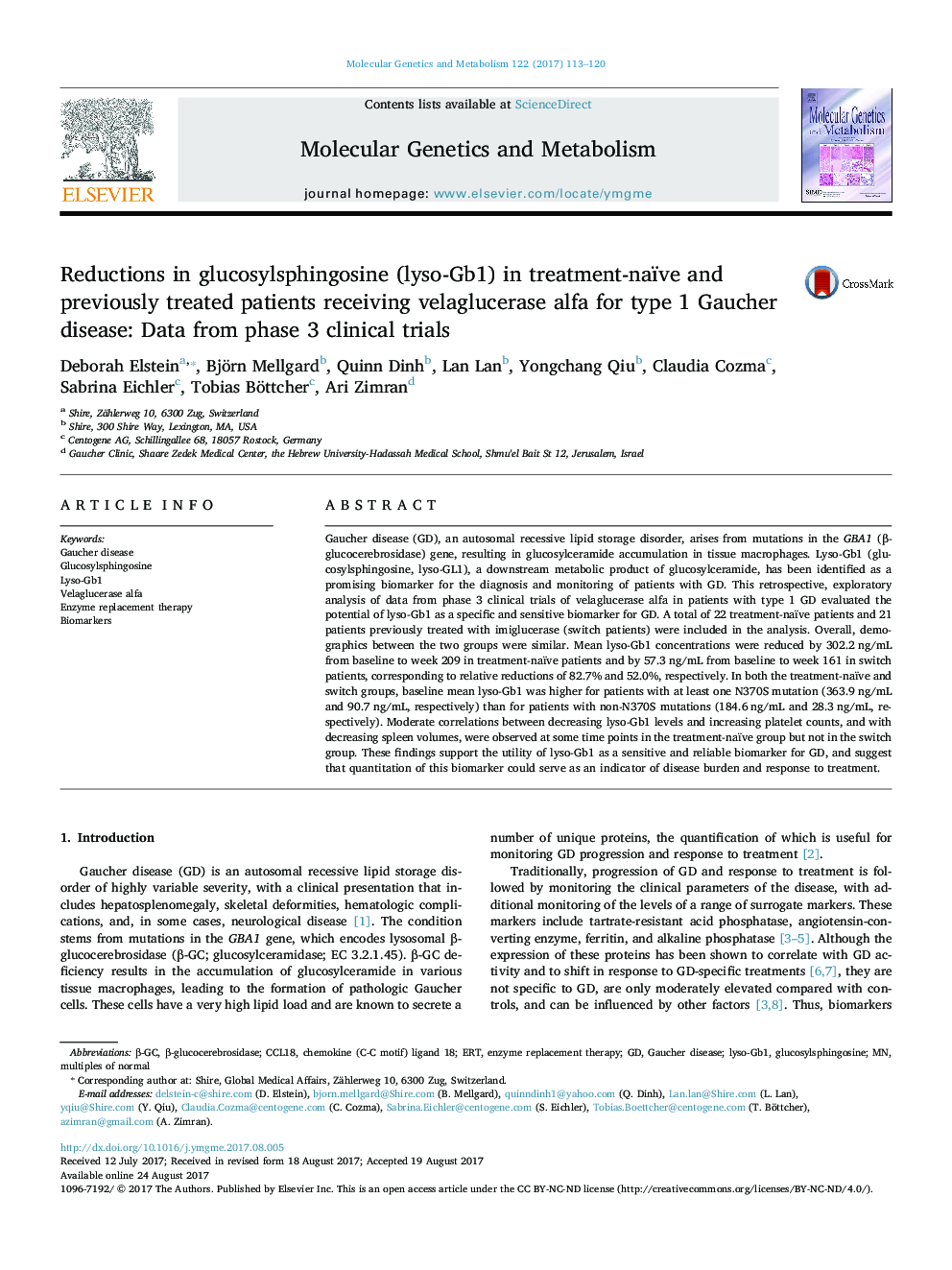| Article ID | Journal | Published Year | Pages | File Type |
|---|---|---|---|---|
| 5513899 | Molecular Genetics and Metabolism | 2017 | 8 Pages |
â¢At baseline, disease parameters were milder for switch patients vs. treatment-naïve patients, reflective of prior treatment.â¢Significant and rapid reductions in lyso-Gb1 were achieved in treatment-naïve patients receiving velaglucerase alfa.â¢Reductions in lyso-Gb1 were also achieved in previously treated patients after switching to velaglucerase alfa.â¢Change in lyso-Gb1 correlated with spleen size and platelet count at some time points for treatment-naïve patients.â¢Based on its involvement in disease pathology and specificity for GD, lyso-Gb1 may serve as a reliable biomarker for GD.
Gaucher disease (GD), an autosomal recessive lipid storage disorder, arises from mutations in the GBA1 (β-glucocerebrosidase) gene, resulting in glucosylceramide accumulation in tissue macrophages. Lyso-Gb1 (glucosylsphingosine, lyso-GL1), a downstream metabolic product of glucosylceramide, has been identified as a promising biomarker for the diagnosis and monitoring of patients with GD. This retrospective, exploratory analysis of data from phase 3 clinical trials of velaglucerase alfa in patients with type 1 GD evaluated the potential of lyso-Gb1 as a specific and sensitive biomarker for GD. A total of 22 treatment-naïve patients and 21 patients previously treated with imiglucerase (switch patients) were included in the analysis. Overall, demographics between the two groups were similar. Mean lyso-Gb1 concentrations were reduced by 302.2 ng/mL from baseline to week 209 in treatment-naïve patients and by 57.3 ng/mL from baseline to week 161 in switch patients, corresponding to relative reductions of 82.7% and 52.0%, respectively. In both the treatment-naïve and switch groups, baseline mean lyso-Gb1 was higher for patients with at least one N370S mutation (363.9 ng/mL and 90.7 ng/mL, respectively) than for patients with non-N370S mutations (184.6 ng/mL and 28.3 ng/mL, respectively). Moderate correlations between decreasing lyso-Gb1 levels and increasing platelet counts, and with decreasing spleen volumes, were observed at some time points in the treatment-naïve group but not in the switch group. These findings support the utility of lyso-Gb1 as a sensitive and reliable biomarker for GD, and suggest that quantitation of this biomarker could serve as an indicator of disease burden and response to treatment.
